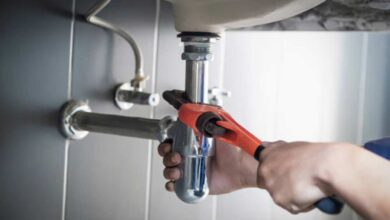Lean manufacturing is one of the most effective systems for boosting productivity in the manufacturing industry. When implemented accurately, it can help reduce overall material and product waste, boost employee morale, make your workplace safer, and increase productivity. What’s not to like? Before making the transition to leaner manufacturing practices, it’s essential to understand what is involved so you can get your entire organization on board. A collective approach to implementing these practices is vital for it to be successful and maximize its benefits.
While there are many avenues of waste in manufacturing, there are four primary areas where companies experience the most waste. Using these guidelines, you can identify your facility’s areas where you are wasting and use these processes to eliminate them. Eliminating your waste will allow you to tighten up your manufacturing practices and focus on creating more high-quality products and turning profits.
Here are four waste principles of lean manufacturing.
1. Inventory waste
Having an excess often makes companies feel organized and prepared, but it often leads to excess waste; you can click here to learn more about managing that. While having excess inventory could make sense for individual businesses, you should be careful not to go overboard in general. Hiring someone on your team who has a Master of Science in lean manufacturing is the best way to get an expert opinion on your inventory levels and identify whether you’re stocking too much.
Inventory can end up stashed on the back of shelves or in drawers and forgotten about, contributing to wastage and profit loss. There are five different categories of inventory that most manufacturing companies carry. These include completed products, sub-assembly, raw materials, office supplies, and MRO stock.
Read Also:
- 3 Key Ways Artificial Intelligence Is Changing the Financial Markets
- Ways to Grow Your Local Business with Digital Marketing
a. Completed products
Completed products are any products that are finished and ready to ship. Most manufacturing facilities will have a reliable stock of completed products to fill orders when they come in. When customers place an order, they want to receive it as soon as possible, so having some back stock of completed products means that you can ship it out straight away.
While a marginal volume of completed products is essential to maintain customer satisfaction, you don’t want to push it too far. Producing too many completed products means that your cash flow is tied up in products you haven’t sold yet. On top of that, they take up lots of storage space and require staff to move and rotate stock continuously.
b. Sub-assembly inventory
Sub-assembly inventory is anything that is not entirely completed but is ready to finalize once customer orders come in. Manufacturers will have sub-assembly inventory when they produce mostly the same product but has some customization options. Sub-assembly inventory is there, ready to have its final pieces added once customers decide on the choice they want. It is not as expensive to carry as completed products are, but it is still a waste. Similar to completed products, it can take up lots of space in storage. Sub-assembly inventory should be kept to a minimum.
c. Raw materials
Raw materials are all the components you use to manufacture your product, and always where the most wastage occurs. Manufacturers often over-order raw materials, thinking that they would rather overprepare. In actuality, they are wasting money. While you do need to consider the amount of time it takes to deliver your materials, that doesn’t mean you need months of extra raw material stock. The more materials you have, the more storage you need for them, plus you have the costs for material handling. Even with deals that you could get on bulk orders, you will still end up digging yourself a hole.
d. Office supplies
Office supplies are not directly related to manufacturing, but they are still a type of inventory that manufacturers have to stock. Office supplies are a widespread waste of inventory, and it takes careful monitoring to ensure you don’t have a lot of waste. Office supplies are usually regular household items, meaning that employees will often take them home, even if they do so by accident.
Since most manufacturing facilities don’t have someone specifically dedicated to monitoring supplies, they will get re-ordered on a schedule just for the sake of it, even when they aren’t needed. While individually, things like packs of pens and Post It! notes don’t cost that much, it adds up over time.
e. Maintenance, Repair, and Operations
The last category of inventory wastage is MRO, which includes equipment parts and replacement parts (like nuts and bolts). Some equipment parts are costly, and you don’t need a ton of them on hand since you may never even need them.
It’s good to have someone with a Master of Science in Lean Manufacturing on staff who you can consult, especially in this category, to determine which parts are vital to have handy. It will come down to which MRO items are hard to get or take a long time to be delivered. In the case of equipment malfunction, you don’t want to have to shut down an entire line while you’re waiting for a part to come in. Items like screws and bolts should always be on hand for quick repairs but avoid purchasing parts that are easy to obtain.
Read also: Improving Maintenance Management Practices in the Mining Industry
2. Overproduction of waste
Overproduction is the costliest type of waste in the manufacturing industry. According to the Just in Time concept, you should only build what you need, when you need it, at the quantity you need. Overproduction does not mean you’re ahead of the game; it means you’re risking having finished stock that you can’t sell. Manufacturers are hesitant to completely shut down production because they have no orders and will continue manufacturing anyway. In lean manufacturing, this doesn’t happen. When you have no orders, you don’t produce any.
When manufacturers overproduce, they risk their inventory becoming obsolete and having no use for the finished products. They might have a surplus of stock sitting on the shelves for months as the product’s demand disappears or the product becomes outdated. In that case, you can’t recoup those losses.
An excess of inventory is not good preparation; it means increased labor for material handling and extra storage needed for items that may never sell. Depending on your product, if it sits on a shelf for too long, it could reduce the quality.
3. Defective products
Another principle of lean manufacturing is the reduction of defective products. If you produce faulty or defective products, you waste materials, employee time, and put your company’s reputation at risk. If somehow a defective product gets onto the shelves and sold to a customer, you could have an angry customer on your hands. You can bet that they won’t be purchasing from you again if they receive a defective product. If a product is faulty, you then have to scramble to determine if that was a one-off issue or if you’ve got tons of defective products on your hands.
Imagine if an entire product line is faulty. That could cost your manufacturing company many thousands or even millions of dollars. Defective products could lead to a product recall, which will negatively impact the reputation of your company. A thorough quality control process is of utmost importance in manufacturing to ensure this doesn’t happen.
Depending on the product you produce, you may be able to salvage parts or rework defective products into something usable. That said, it still comes with a hefty price tag. If you can’t, then the product goes to scrap, meaning all your material, labor, and you sacrifice equipment costs.
4. Waste of employee time and energy
The last area of waste explored in this article is the waste of employee time and energy. They say time is money and paying employees to do meaningless tasks is considerable wastage. Eliminating wasted energy in every area possible will add up to higher productivity levels. Employees waste their time and energy in almost every industry, but it’s extremely common in manufacturing. As staff bends, reaches, lifts, and walks to access the items they need, they waste motion unnecessarily. Identifying where employees are wasting their energy will allow you to minimize it by reconfiguring how you set your facility.
For example, if you are storing equipment parts at the other end of the factory from where you need them, employees will need to walk back and forth to retrieve them continually. While the extra 10 minutes each day may not seem that substantial, it means that product lines come to a halt for 10 minutes a day, in which time you could produce multiple products.
That adds up over time. Store items close to where they are needed and at easily accessible heights. Don’t put heavy things on the ground, making employees consume more energy to lift them. Instead, create efficient systems that reduce time wasted on activities that could be made accessible and more manageable
Conclusion
On top of these four primary waste areas, manufacturers waste in other areas, such as overprocessing, transportation, and waiting. By hiring a staff member with a Master of Science in Lean Manufacturing, you can create new processes that will help you reduce waste and start allocating money more strategically.
.








